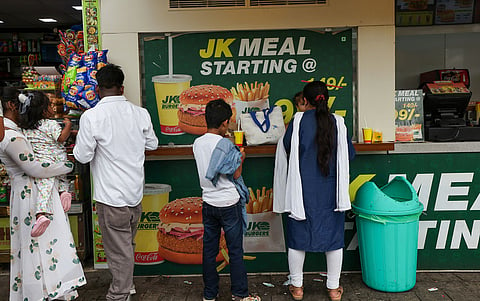India is growing fast. Yet, many of its children are either too weak to grow or too sick from lifestyle diseases
In August 2025, The Food Safety and Standards Authority of India (FSSAI) introduced a new category of foods under the banner of ‘Ayurveda Aahara’ in line with the traditional food wisdom of the Ayurveda. While reading this news, one is compelled to wonder if this wisdom will actually reach the masses. Will it be inculcated in the Mid-Day meal scheme? To what extent will adolescents benefit?
India is racing ahead in Gross Domestic Product growth. According to the World Bank, it is now ranked as the fourth-largest economy in the world. But its children are being left behind. According to the National Family Health Survey of 2019-21, over one-third of children under five are stunted, one in five is wasted, and two-thirds are anaemic. These numbers are millions of children marked by fatigue, fragile health and represent a future workforce starting life with a handicapped health.
As our toddlers struggle with under-nutrition, urban families are increasingly hooked on packaged snacks, sugary drinks, and fast food. As a consequence, our adolescents struggle with lifestyle diseases. Diabetes, cholesterol, and Polycystic Ovarian Disease are becoming common health issues among teenagers. The FSSAI, in collaboration with Hyderabad’s National Institute of Nutrition (NIN), has recommended a new packaging for packaged food items, which is poised to inform consumers better.
But what has been the source of these two problems? As the fastest-growing economy for decades now, how did the population end up here? Battling a double burden of children too weak to grow and adults too sick from lifestyle diseases is not an overnight problem. Both crises have one root: our policies are stuck in the past, counting calories but ignoring nutrition.
This is exactly the effort intended in schemes such as the Integrated Child Development Services, Mid-Day Meal Scheme, and Poshan Abhiyaan. All are well-intentioned and far-reaching but only focused on filling stomachs, not nourishing bodies. Rice and dal in a school meal may silence hunger, but they do little to fix protein or micronutrient deficiencies. The policy outlook towards these schemes shows the charity mindset by which mid-day meals are provided. The recent decision of the Maharashtra government to withdraw funds for eggs and millet-based sweets in mid-day meals is a testimony of this outlook. So, one of the wealthiest states of the country is short of funds for providing for our children. Shocking and saddening. And this is why, despite decades of effort, stunting has fallen only marginally, and anaemia has worsened.
Contrast this with Scandinavia, where Sweden has provided free, nutritious, universal school meals for decades. They started right after the Second World War and designed the meals to meet strict Nordic Nutritional Standards. Denmark and Norway go further, weaving nutrition counselling into routine child health visits, taxing sugary drinks, and strictly policing junk food advertising to children. For them, good nutrition is not welfare. It is a public good that shapes healthier, smarter citizens.
This difference is about mindset, not money. India relies on targeted, remedial schemes. Scandinavia embraces universal, preventive ones. They understand what India has yet to accept—that the first thousand days of life determine everything from school performance to adult earnings. No later intervention can fully repair the damage of poor childhood nutrition.
We cannot leave the market to itself, only to worsen the problem. Just take a casual walk into any kirana shop or supermarket and you will see shelves overflowing with chips, sodas, and ultra-processed foods. Most of these products are aggressively marketed to children. Labels are confusing, regulations weak, and enforcement sporadic. The poor are not aware of the labels and ingredients. Parents unknowingly feed their children products that quietly damage their health. Scandinavian governments recognised this danger long ago and acted. They devised a system of strict labelling, transparent rules, and even sugar taxes. Encouragingly, the Economic Survey of India (2025) recommended a health tax on ultra-processed food which is a welcome start.
The case for action is overwhelming. Every rupee invested in child nutrition saves many more in healthcare costs and productivity losses later. Prevention is not just cheaper than cure—it is also the difference between a healthy childhood and a lost future. With India’s high out-of-pocket medical spending already pushing millions into poverty, better child nutrition is as much an equity issue as a health one.
Aarushi Joshi is Assistant Professor with the Department of Economics, Dr. Bhim Rao Ambedkar College, University of Delhi
Views expressed are the author’s own and don’t necessarily reflect those of Down To Earth

